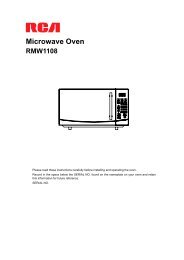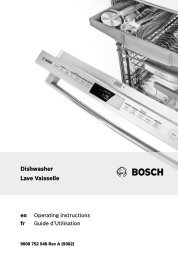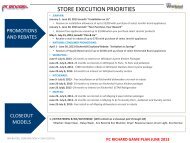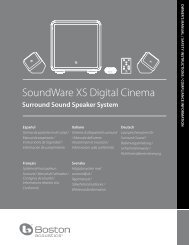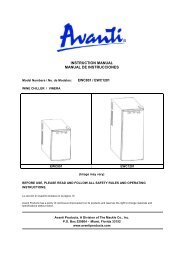Manual - Niles Audio
Manual - Niles Audio
Manual - Niles Audio
You also want an ePaper? Increase the reach of your titles
YUMPU automatically turns print PDFs into web optimized ePapers that Google loves.
Figure 3. Wiring directly from a<br />
receiver or amplifie<br />
Figure 4. Incorporating a<br />
volume control<br />
RECOMMENDED AMPLIFIER POWER<br />
For optimum performance, we recommend amplifiers with the following power ratings:<br />
• For the OS 5.5 loudspeaker, 5 to 100 per channel<br />
• For the OS 6.5 loudspeaker, 5 to 125 per channel<br />
• For the OS 7.5 loudspeaker, 5 to 150 per channel<br />
Ironically, most loudspeakers are not damaged by large amplifiers but by small amplifiers. If you are<br />
playing at high volume, a small amplifier will run out of power very quickly. When an amplifier runs<br />
out of power it creates damaging “clipping” distortion. A large amplifier will play at the same volume<br />
without distorting. See OPERATION on page 17 for more information about clipping distortion.<br />
PLACING LOUDSPEAKERS FOR THE BEST SOUND QUALITY<br />
An OS loudspeaker’s dispersion pattern is very broad. This allows good sound quality over an<br />
extremely large listening area. However, if a single pair is positioned to provide coverage of a very<br />
large room or patio, you will have “hot spots” of loud sound when you are near the loudspeakers.<br />
The best way to avoid hot spots for a large space is to use several pairs of loudspeakers evenly<br />
spaced throughout the room. A good rule of thumb is to install a pair of loudspeakers for every 200<br />
to 400 square feet (18.58 to 37.16 square meters) of listening area. Your local <strong>Niles</strong> dealer is a<br />
good source for advice on loudspeaker placement for your particular installation.<br />
(CONTINUED ON NEXT PAGE)<br />
NILES AUDIO CORPORATION – 1-800-BUY-HIFI – 305-238-4373<br />
7



